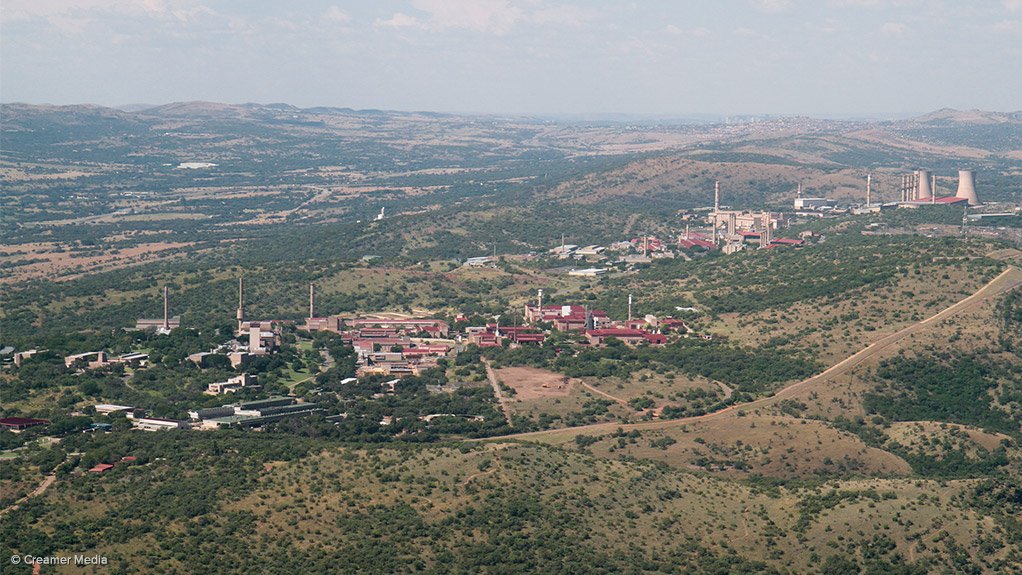Nuclear energy is the only provider of secure, reliable, clean and affordable baseload power that, from a total life cycle cost perspective, offers one of the most affordable electricity sources, states the Nuclear Industry Association of South Africa (Niasa).
Niasa supply chain development subcommittee chairperson Des Muller lists reasons why other baseload power providers are subpar, noting that coal – despite its ability to provide reliable and affordable power supply – produces emissions that affect air quality and are a major health concern. Gas’s dispatch ability is not suited for pure baseload and, the volatility in fuel costs, although currently low, could have an enormous impact on the electricity price in the future. Finally, the “intermittency” of renewables ensures that they barely compete in the baseload space, especially when factoring in the cost of balancing power from gas turbines and the costs of energy storage systems needed to manage this intermittency.
Muller notes that the high cost of nuclear power plants (NPPs) can be attributed to the essential safety systems built into the plants, affirming that these systems ensure that installed costs are higher than those of other technologies. He comments that, despite higher lead times and costs, the total life cycle cost of electricity from a NPP is still one of the most affordable forms of electricity.
“When considering the all-inclusive total life cycle costs of electricity from the different generation technologies over the 60-year life of a NPP, nuclear energy comes second only to hydropower. For example, Koeberg has been producing high volumes of the lowest cost energy on the grid, since its construction costs were amortised two decades ago,” he points out.
He notes that discrepancies in estimated energy costs can and have been manipulated, stating that, when conveniently taking certain criteria out of context, some technologies can appear to be more cost effective than others.
Preparing for the Proposed Build
Muller notes that, as with all power generation technologies, the average cost of NPPs will drop as more power plants are built and manufacturing and construction techniques are refined.
Additionally, as far as he is aware, South Africa would likely procure a proven technology to mitigate the risk of cost and schedule overruns being seen on first-of-a-kind builds. “This provides us with highly experienced partners and hard-won construction methodologies to help minimise the cost.”
He notes that he is hopeful that the recent downgrades are not a medium- to long-term feature, and expects that financing will be managed in the competitive procurement process by each of the vendor countries.
“South Africa has a well-established, functional nuclear industry capable of launching a build programme in partnership with an international nuclear vendor country,” Muller says, adding that the local industries that formed around the coal builds could also be aligned to manufacturing and construction opportunities on a nuclear build when adequately prepared.
Muller reminds South African that a nuclear build would be more a management challenge than a technical challenge for our industries, in what, in terms of scope and quantum of job and career opportunities across the supply chain, will also set a precedent for the rest of Africa.
Moreover, he mentions that the emphasis on regional localisation, where possible, opens up opportunities to all who have a product or service to contribute to NPP licensing, procurement, engineering, construction, commissioning, operations and maintenance, which includes fuel and waste management and eventual decommissioning.
Muller adds that all the vendors competing for the nuclear new build, together with local industry stakeholders and the International Atomic Energy Agency (IAEA), are equipped to manage the roll-out of a nuclear industrialisation programme, which will include the transfer of knowledge and technology where applicable. “Considering South Africa is a world-class industrial nation, this process will be tough and protracted but is no doubt achievable.”
He does advise that there is a “huge gap” between the present industrial quality and safety cultures that are necessary in the nuclear industry, which would need to encompass the full supply chain including artisan training, service providers and tertiary education institutions and would require time to be invested.
“A number of our universities are already delivering excellent results in postgraduate education in nuclear sciences and engineering for peaceful applications, like energy and nuclear medicine, where we are a global player.”
Further, he highlights that, while a nuclear qualification and accreditation framework exist, it will need to be scaled up to accommodate the demand from industry when State-owned power utility Eskom and State-owned nuclear company South African Nuclear Energy Corporation (Necsa) start their build programme.
Muller notes that, although the exact codes and standards for the build will only materialise once the vendor country has been identified, there is a lot of valuable ground that can be covered in benchmarking South Africa’s industry against internationally benchmarked local nuclear regulatory standards and requirements. “This will be a significant step forward toward being considered by the selected NPP vendor and its technology partners.”
He states that a few South African companies have already achieved these standards and have been implementing them on the Koeberg NPP and Necsa’s Research Reactor with success.
Muller affirms that the anticipated nuclear build programme has been strategically and methodically progressed under the auspices of the IAEA, which conducted an Integrated Nuclear Infrastructure Review – a 19 point checklist which includes sections on licensing, safeguards, funding and industrialisation – of South Africa’s readiness to implement a nuclear build programme.
“South Africa has the essential regulatory structures, implementation authorities and international support to initiate and mobilise a viable nuclear build programme. This will all come together and materialise into an orchestrated industrial roll-out plan when the vendor country has been selected and aligned to the overarching objectives of the build programme,” Muller concludes.
Edited by: Zandile Mavuso
Creamer Media Senior Deputy Editor: Features
EMAIL THIS ARTICLE SAVE THIS ARTICLE
ARTICLE ENQUIRY
To subscribe email subscriptions@creamermedia.co.za or click here
To advertise email advertising@creamermedia.co.za or click here













